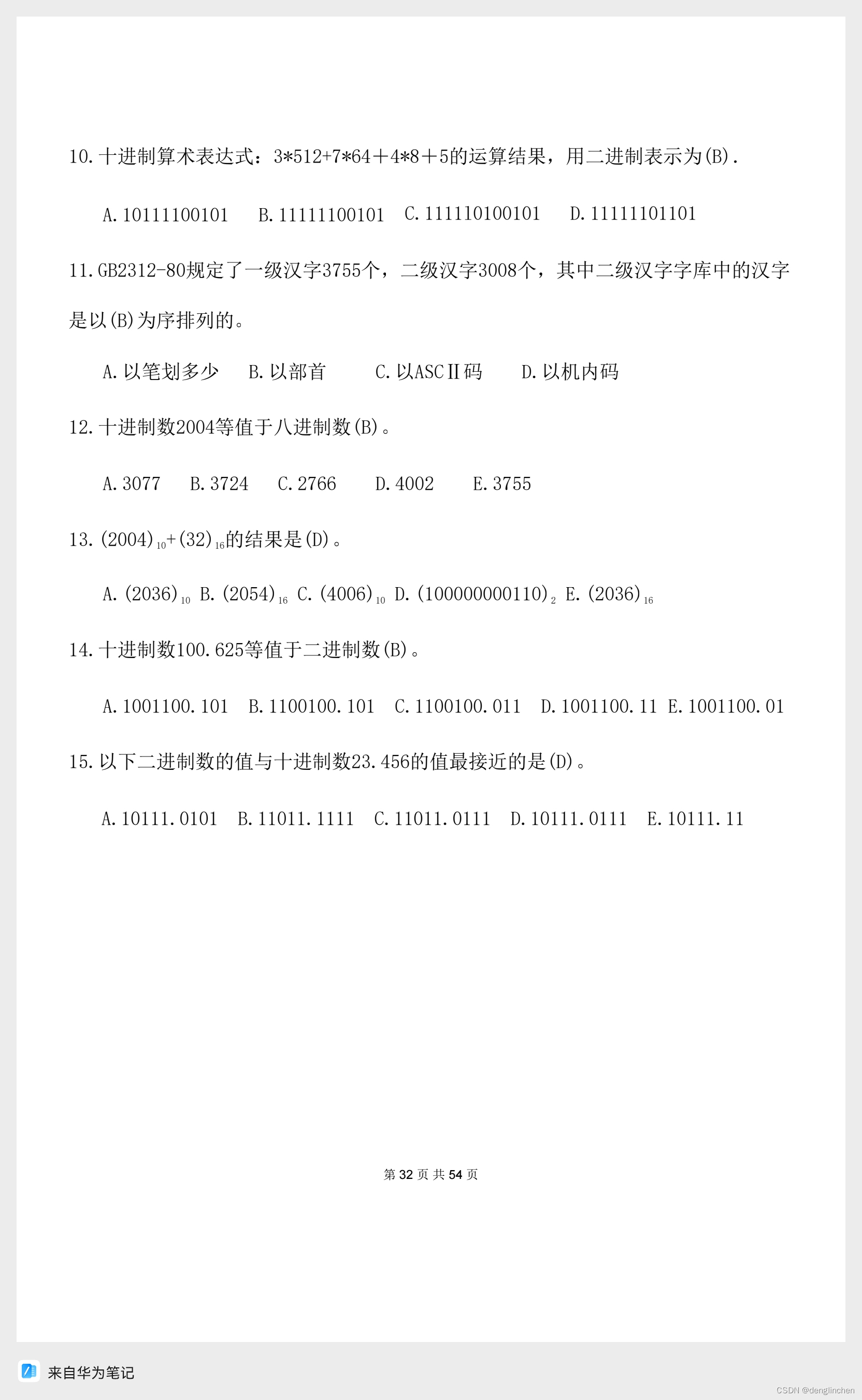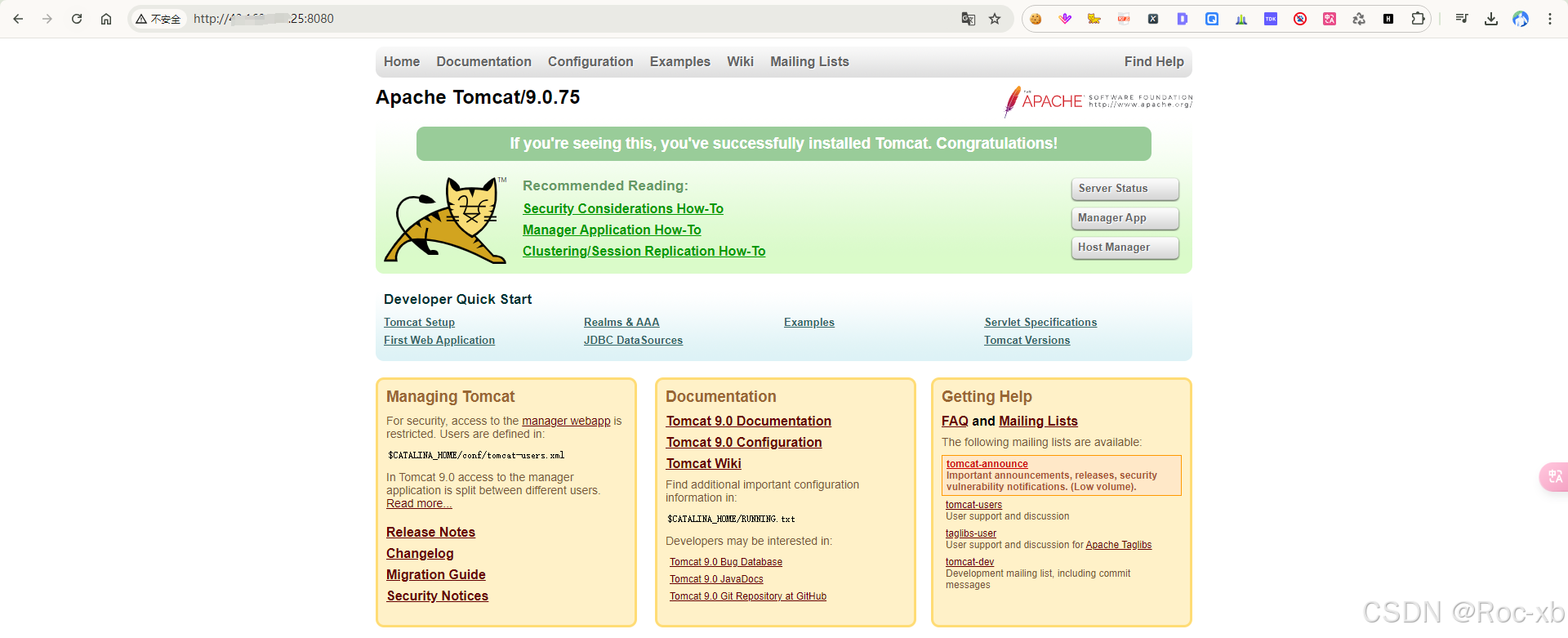深度学习笔记(6)Hugginface -Transformer
文章目录
- 深度学习笔记(6)Hugginface -Transformer
- 一、工具包
- 二、 Tokenizer
- 三、 模型加载
- 四、 输出
- 五,padding的作用
- 5.1 attention_mask
- 5.2 不同padding方法
- 六,数据集与模型
- 6.1 数据集
- 6.2 处理数据
- 6.3 对所有数据处理
- 六,训练模块
一、工具包
1.安装transformer
pip install transformers
安装完成后,你可以通过以下代码在Python中导入transformers来验证安装是否成功:
import transformers
print(transformers.__version__)
然后用一段代码测试一下
import warnings
warnings.filterwarnings("ignore")
from transformers import pipeline#用人家设计好的流程完成一些简单的任务
classifier = pipeline("sentiment-analysis")
classifier(
[
"I've been waiting for a HuggingFace course my whole life.",
"I hate this so much!",
]
)
结果如下就是加载成功
[{'label': 'POSITIVE', 'score': 0.9598049521446228},
{'label': 'NEGATIVE', 'score': 0.9994558691978455}]
基本流程如下

1.输入文本
2.分词,ipput IDs是分词器得到的结果,把每个词都转换成了唯一的ID。这里我们要指定对应的分词器,转换成list
3.输入到模型中得到预测结果。
4.后处理
二、 Tokenizer
Tokenizer要做的事:
- 分词,分字以及特殊字符(起始,终止,间隔,分类等特殊字符可以自己设计的)
- 对每一个token映射得到一个ID(每个词都会对应一个唯一的ID)
- 还有一些辅助信息也可以得到,比如当前词属于哪个句子(还有一些MASK,表示是否事原来的词还是特殊字符等)
from transformers import AutoTokenizer#自动判断,这段代码基本可以不用改,它会根据你后面引用的模型来看
checkpoint = "distilbert-base-uncased-finetuned-sst-2-english"#根据这个模型所对应的来加载,模型去Hugginface的官网去找,可以根据对应的名字去搜索
tokenizer = AutoTokenizer.from_pretrained(checkpoint)
然后进行输入
raw_inputs = [
"I've been waiting for a this course my whole life.",#指定的两句话
"I hate this so much!",
]
inputs = tokenizer(raw_inputs, padding=True, truncation=True, return_tensors="pt")
print(inputs)
这几个参数是什么意思呢,第一个是padding,因为两个句子长度不一样,所以需要把这两句话作成长度一样的,padding=true默认是按长度长那个算,比如第一句5个,第二句10个,那就会把第一个补0.
truncation截断,这里可以自己指定,就是最大的字数都长度。比如最大长度为8,那I’ve been waiting for a this course my whole life就只能留下I’ve been waiting for a this course my
return_tensors 选择底层是啥pt就是pytorch,tensorflow就分tf
运行结果如下
{'input_ids': tensor([[ 101, 1045, 1005, 2310, 2042, 3403, 2005, 1037, 2023, 2607, 2026, 2878,
2166, 1012, 102],
[ 101, 1045, 5223, 2023, 2061, 2172, 999, 102, 0, 0, 0, 0,
0, 0, 0]]), 'attention_mask': tensor([[1, 1, 1, 1, 1, 1, 1, 1, 1, 1, 1, 1, 1, 1, 1],
[1, 1, 1, 1, 1, 1, 1, 1, 0, 0, 0, 0, 0, 0, 0]])}
[[ 101, 1045, 1005, 2310, 2042, 3403, 2005, 1037, 2023, 2607, 2026, 2878,
2166, 1012, 102],是第一个
第二个是 [ 101, 1045, 5223, 2023, 2061, 2172, 999, 102, 0, 0, 0, 0,
0, 0, 0] ,按理说第二个只有 6个单词,为啥有8个呢,因为存在一些特殊字符,101和102是特殊字符cls和sep sep之后都是补0的,也就是没意义的东西。
'attention_mask中为1的是 作attention的时候要去算的,为1的就是要去算的,为0就是不去算的,比如第二句话后面补0的都是没意义的,所以没必要算。不会参与到selfattention中。
tokenizer.decode([ 101, 1045, 1005, 2310, 2042, 3403, 2005, 1037, 2023, 2607, 2026, 2878,2166, 1012, 102])
解码看下编码的是啥
"[CLS] i've been waiting for a this course my whole life. [SEP]"
三、 模型加载
from transformers import AutoModel#还是一样自动选模型
checkpoint = "distilbert-base-uncased-finetuned-sst-2-english"#模型的名字
model = AutoModel.from_pretrained(checkpoint)#从预训练中直接选择
model#打印出来观察下
DistilBertModel(
(embeddings): Embeddings(
(word_embeddings): Embedding(30522, 768, padding_idx=0)
(position_embeddings): Embedding(512, 768)
(LayerNorm): LayerNorm((768,), eps=1e-12, elementwise_affine=True)
(dropout): Dropout(p=0.1, inplace=False)
)
(transformer): Transformer(
(layer): ModuleList(
(0-5): 6 x TransformerBlock(
(attention): MultiHeadSelfAttention(
(dropout): Dropout(p=0.1, inplace=False)
(q_lin): Linear(in_features=768, out_features=768, bias=True)
(k_lin): Linear(in_features=768, out_features=768, bias=True)
(v_lin): Linear(in_features=768, out_features=768, bias=True)
(out_lin): Linear(in_features=768, out_features=768, bias=True)
)
(sa_layer_norm): LayerNorm((768,), eps=1e-12, elementwise_affine=True)
(ffn): FFN(
(dropout): Dropout(p=0.1, inplace=False)
(lin1): Linear(in_features=768, out_features=3072, bias=True)
(lin2): Linear(in_features=3072, out_features=768, bias=True)
(activation): GELUActivation()
)
(output_layer_norm): LayerNorm((768,), eps=1e-12, elementwise_affine=True)
)
)
)
)
outputs = model(**inputs)
print(outputs.last_hidden_state.shape)
torch.Size([2, 15, 768])
第一个数字2表示批处理大小(batch size)。这意味着张量包含2个样本。
第二个数字15通常表示序列长度(sequence length),特别是在处理序列数据(如文本或时间序列)时。这意味着每个样本是一个长度为15的序列。
第三个数字768表示特征维度(feature dimension)。对于每个序列位置,都有一个包含768个数字的特征向量。
四、 输出
需要什么输出就用什么输出头,,用于进行序列分类任务,比如情感分析、文本分类等。
比如AutoModelForSequenceClassification
from transformers import AutoModelForSequenceClassification
# 指定预训练模型的名称,这里使用的是DistilBERT模型,已经针对SST-2(情感分析任务)进行了微调
checkpoint = "distilbert-base-uncased-finetuned-sst-2-english"
# 加载预训练模型,这个模型已经准备好进行序列分类任务
model = AutoModelForSequenceClassification.from_pretrained(checkpoint)
# 使用模型进行预测,这里inputs是一个字典,包含了模型需要的所有输入
outputs = model(**inputs)
# 打印输出中的logits的形状
# logits的形状通常是[batch_size, num_labels],其中batch_size是输入的批处理大小,num_labels是分类任务的类别数量
# 对于SST-2情感分析任务,num_labels通常是2(正面和负面)
print(outputs.logits.shape)
torch.Size([2, 2]) #
模型对一批包含2个样本的数据进行了预测。
对于每个样本,模型输出了2个值,这两个值分别代表样本被分类为正面和负面的原始得分(logits)。
然后要进行softmax
i
mport torch
predictions = torch.nn.functional.softmax(outputs.logits, dim=-1)
print(predictions)
在应用函数如softmax时,通常需要在类别维度上应用,以计算每个样本在每个类别上的概率。例如,对于一个形状为[batch_size, num_classes]的logits张量,我们通常在num_classes这个维度上应用softmax,即dim=-1,因为这是类别维度的索引。
所以上面的代码是输出类别的概率、
tensor([[1.5446e-02, 9.8455e-01],
[9.9946e-01, 5.4418e-04]], grad_fn=<SoftmaxBackward0>)
d2label这个我们后续可以自己设计,标签名字对应都可以自己指定
model.config.id2label
{0: 'NEGATIVE', 1: 'POSITIVE'}
五,padding的作用
这段代码只是个例子,和上面的任务无关
sequence1_ids = [[200, 200, 200]]
sequence2_ids = [[200, 200]]
batched_ids = [
[200, 200, 200],
[200, 200, tokenizer.pad_token_id],
]
print(model(torch.tensor(sequence1_ids)).logits)
print(model(torch.tensor(sequence2_ids)).logits)
print(model(torch.tensor(batched_ids)).logits)
tensor([[ 1.5694, -1.3895]], grad_fn=<AddmmBackward0>)
tensor([[ 0.5803, -0.4125]], grad_fn=<AddmmBackward0>)
tensor([[ 1.5694, -1.3895],
[ 1.3374, -1.2163]], grad_fn=<AddmmBackward0>)
你会发现单sequence2_ids = [[200, 200]]和[200, 200, tokenizer.pad_token_id]预测结果不一样,因为这里没有使用attention_mask,所以模型可能会错误地将填充的部分考虑在内,所以结果不一样。所以attention_mask必要要加上。
5.1 attention_mask
batched_ids = [
[200, 200, 200],
[200, 200, tokenizer.pad_token_id],
]
attention_mask = [
[1, 1, 1],
[1, 1, 0],
]
outputs = model(torch.tensor(batched_ids), attention_mask=torch.tensor(attention_mask))
print(outputs.logits)
tensor([[ 1.5694, -1.3895],
[ 0.5803, -0.4125]], grad_fn=<AddmmBackward0>)
加上这段attention_mask ,结果就没问题了。
5.2 不同padding方法
sequences = ["I've been waiting for a this course my whole life.", "So have I!", "I played basketball yesterday."]
1.按照最长的填充
model_inputs = tokenizer(sequences, padding="longest")
model_inputs
{'input_ids': [[101, 1045, 1005, 2310, 2042, 3403, 2005, 1037, 2023, 2607, 2026, 2878, 2166, 1012, 102], [101, 2061, 2031, 1045, 999, 102, 0, 0, 0, 0, 0, 0, 0, 0, 0], [101, 1045, 2209, 3455, 7483, 1012, 102, 0, 0, 0, 0, 0, 0, 0, 0]], 'attention_mask': [[1, 1, 1, 1, 1, 1, 1, 1, 1, 1, 1, 1, 1, 1, 1], [1, 1, 1, 1, 1, 1, 0, 0, 0, 0, 0, 0, 0, 0, 0], [1, 1, 1, 1, 1, 1, 1, 0, 0, 0, 0, 0, 0, 0, 0]]}
2.BERT默认最大是512
model_inputs = tokenizer(sequences, padding="max_length")
model_inputs
3.自己指定填充到多少,不满足的自动添加,但是超过的不进行截断
model_inputs = tokenizer(sequences, padding="max_length", max_length=8)
model_inputs
{'input_ids': [[101, 1045, 1005, 2310, 2042, 3403, 2005, 1037, 2023, 2607, 2026, 2878, 2166, 1012, 102], [101, 2061, 2031, 1045, 999, 102, 0, 0], [101, 1045, 2209, 3455, 7483, 1012, 102, 0]], 'attention_mask': [[1, 1, 1, 1, 1, 1, 1, 1, 1, 1, 1, 1, 1, 1, 1], [1, 1, 1, 1, 1, 1, 0, 0], [1, 1, 1, 1, 1, 1, 1, 0]]}
4.到多少就截。truncation=True就是截断
model_inputs = tokenizer(sequences, max_length=10, truncation=True)
model_inputs
六,数据集与模型
6.1 数据集
先安装dataset模块`pip install datasets
import warnings
warnings.filterwarnings("ignore")
from datasets import load_dataset#datasets库中导入load_dataset函数。datasets是一个由Hugging Face提供的库,用于加载和操作不同类型的数据集。
raw_datasets = load_dataset("glue", "mrpc")
raw_datasets
import warnings:导入Python的warnings模块,用于控制警告信息。
warnings.filterwarnings(“ignore”):这个函数调用用于过滤掉所有警告信息,即忽略警告。在某些情况下,这可能是有用的,比如当警告信息对当前任务不重要,或者在调试过程中想要忽略特定的警告。
所以这两行不重要
这个函数调用用于加载一个名为"glue"的数据集,其中的子集是"mrpc"。
看看数据长啥样子
DatasetDict({
train: Dataset({
features: ['sentence1', 'sentence2', 'label', 'idx'],
num_rows: 3668
})
validation: Dataset({
features: ['sentence1', 'sentence2', 'label', 'idx'],
num_rows: 408
})
test: Dataset({
features: ['sentence1', 'sentence2', 'label', 'idx'],
num_rows: 1725
})
})
sentence1:第一个句子。
sentence2:第二个句子。
label:标签,用于分类任务。
idx:数据的索引或ID。
num_rows:数据集中包含的行数,即样本的数量。
raw_train_dataset = raw_datasets["train"] #选取train的数据集
raw_train_dataset[100]#选100号样本看看
{'sentence1': 'The Nasdaq composite index inched up 1.28 , or 0.1 percent , to 1,766.60 , following a weekly win of 3.7 percent .',#第一个句子
'sentence2': 'The technology-laced Nasdaq Composite Index .IXIC was off 24.44 points , or 1.39 percent , at 1,739.87 .',#第二个句子
'label': 0,#二分类
'idx': 114}
label:标签,用于指示这两个句子是否是同义句。在这个例子中,标签是0,这意味着这两个句子不是同义句。
idx:数据的索引或ID,这是一个唯一的标识符,用于标识数据集中的每个样本。在这个例子中,索引是114。
raw_train_dataset.features
{'sentence1': Value(dtype='string', id=None),
'sentence2': Value(dtype='string', id=None),
'label': ClassLabel(names=['not_equivalent', 'equivalent'], id=None),
'idx': Value(dtype='int32', id=None)}
sentence1 和 sentence2:这两个键对应于数据集中的两个句子特征。它们的值类型是字符串(string)。
label:这个键对应于数据集中的标签特征。标签用于指示两个句子是否是同义句。在这个例子中,标签的值类型是ClassLabel,它是一个特殊的类型,表示分类特征,并且具有一个名为names的属性,它是一个列表,包含了标签的可能值(在这个例子中是[‘not_equivalent’, ‘equivalent’])。
idx:这个键对应于数据集中的索引特征。它的值类型是整数(int32)。
6.2 处理数据
from transformers import AutoTokenizer
checkpoint = "bert-base-uncased"
tokenizer = AutoTokenizer.from_pretrained(checkpoint)
AutoTokenizer 类的作用在于,它能够根据提供的模型名称自动加载与该模型兼容的分词器。这意味着,如果你有一个预训练的模型,你可以使用AutoTokenizer来加载一个与该模型一起训练的分词器,这样可以确保分词器与模型之间的兼容性,从而在训练和推理过程中获得最佳性能。
例如,如果你有一个名为"bert-base-uncased"的预训练BERT模型,你可以使用AutoTokenizer来加载一个与之兼容的分词器,然后使用这个分词器来处理输入文本,以便模型可以处理。
inputs = tokenizer("This is the first sentence.", "This is the second one.")
inputs
{'input_ids': [101, 2023, 2003, 1996, 2034, 6251, 1012, 102, 2023, 2003, 1996, 2117, 2028, 1012, 102], 'token_type_ids': [0, 0, 0, 0, 0, 0, 0, 0, 1, 1, 1, 1, 1, 1, 1], 'attention_mask': [1, 1, 1, 1, 1, 1, 1, 1, 1, 1, 1, 1, 1, 1, 1]}
这里多了个token_type_ids
因为这个模型bert-base-uncased是把两个句子合在一起的,所以用token_type_ids区分两个句子。
tokenizer在这个任务是这样的,但是有些任务不是这样的,具体任务要具体设置
这里可用tokenizer.convert_ids_to_tokens(inputs["input_ids"])转回去看看
['[CLS]',
'this',
'is',
'the',
'first',
'sentence',
'.',
'[SEP]',
'this',
'is',
'the',
'second',
'one',
'.',
'[SEP]']
6.3 对所有数据处理
def tokenize_function(example):
return tokenizer(example["sentence1"], example["sentence2"], truncation=True)
这个函数通常用于数据预处理阶段,即将原始文本数据转换为模型可以处理的整数序列。它可以帮助确保模型输入的一致性和标准化。
truncation=True 是一个参数,它指示分词器应该对输入的序列进行截断,以匹配模型的最大序列长度。如果序列太长,分词器会自动截断超出长度的部分。
tokenized_datasets = raw_datasets.map(tokenize_function, batched=True)
tokenized_datasets
tokenize_function 将被应用到一批样本上,而不是单独应用到一个样本上。这样可以提高效率,尤其是在处理大型数据集时。这个操作通常在数据预处理阶段执行,以便将原始文本数据转换为模型可以处理的整数序列。它有助于确保模型输入的一致性和标准化。
DatasetDict({
train: Dataset({
features: ['sentence1', 'sentence2', 'label', 'idx', 'input_ids', 'token_type_ids', 'attention_mask'],
num_rows: 3668
})
validation: Dataset({
features: ['sentence1', 'sentence2', 'label', 'idx', 'input_ids', 'token_type_ids', 'attention_mask'],
num_rows: 408
})
test: Dataset({
features: ['sentence1', 'sentence2', 'label', 'idx', 'input_ids', 'token_type_ids', 'attention_mask'],
num_rows: 1725
})
})
可以看到多了 ‘input_ids’, ‘token_type_ids’, 'attention_mask’三个字段tokenize可以把转换好的映射到原来的数据中
注意:tokenize只是对数据预处理,模型现在是无法直接使用的
from transformers import DataCollatorWithPadding
data_collator = DataCollatorWithPadding(tokenizer=tokenizer)
封装数据,让模型能读数据。实际就是DataCollator 加载数据
samples = tokenized_datasets["train"][:8]#取到前8个杨门所有的列
samples = {k: v for k, v in samples.items() if k not in ["idx", "sentence1", "sentence2"]}#不需要这些列
[len(x) for x in samples["input_ids"]]#每一个样本的长度
就是不用"idx", “sentence1”, “sentence2”] 这几列,留下剩下的列。因为训练模型的时候这几列是不要的
batch = data_collator(samples)
{k: v.shape for k, v in batch.items()}
{'attention_mask': torch.Size([8, 67]),
'input_ids': torch.Size([8, 67]),
'labels': torch.Size([8]),
'token_type_ids': torch.Size([8, 67])}
上面的操作就等于是经过data_collator处理之后,所有的样本长度都是固定的
六,训练模块
from transformers import TrainingArguments
training_args = TrainingArguments("test-trainer")
导入 TrainingArguments 类,这是 transformers 库中的一个类,用于定义和配置模型训练的参数
创建 TrainingArguments 对象后,您可以使用它来定义和配置模型训练的各种参数,如学习率、批次大小、最大训练步数等。
training_args
TrainingArguments(
_n_gpu=0,
adafactor=False,
adam_beta1=0.9,
adam_beta2=0.999,
adam_epsilon=1e-08,
bf16=False,
bf16_full_eval=False,
dataloader_drop_last=False,
dataloader_num_workers=0,
dataloader_pin_memory=True,
ddp_bucket_cap_mb=None,
ddp_find_unused_parameters=None,
debug=[],
deepspeed=None,
disable_tqdm=False,
do_eval=False,
do_predict=False,
do_train=False,
eval_accumulation_steps=None,
eval_steps=None,
evaluation_strategy=IntervalStrategy.NO,
fp16=False,
fp16_backend=auto,
fp16_full_eval=False,
fp16_opt_level=O1,
gradient_accumulation_steps=1,
gradient_checkpointing=False,
greater_is_better=None,
group_by_length=False,
half_precision_backend=auto,
hub_model_id=None,
hub_strategy=HubStrategy.EVERY_SAVE,
hub_token=<HUB_TOKEN>,
ignore_data_skip=False,
label_names=None,
label_smoothing_factor=0.0,
learning_rate=5e-05,
length_column_name=length,
load_best_model_at_end=False,
local_rank=-1,
log_level=-1,
log_level_replica=-1,
log_on_each_node=True,
logging_dir=test-trainer\runs\May26_10-08-48_WIN-BM410VRSBIO,
logging_first_step=False,
logging_nan_inf_filter=True,
logging_steps=500,
logging_strategy=IntervalStrategy.STEPS,
lr_scheduler_type=SchedulerType.LINEAR,
max_grad_norm=1.0,
max_steps=-1,
metric_for_best_model=None,
mp_parameters=,
no_cuda=False,
num_train_epochs=3.0,
optim=OptimizerNames.ADAMW_HF,
output_dir=test-trainer,
overwrite_output_dir=False,
past_index=-1,
per_device_eval_batch_size=8,
per_device_train_batch_size=8,
prediction_loss_only=False,
push_to_hub=False,
push_to_hub_model_id=None,
push_to_hub_organization=None,
push_to_hub_token=<PUSH_TO_HUB_TOKEN>,
remove_unused_columns=True,
report_to=['tensorboard', 'wandb'],
resume_from_checkpoint=None,
run_name=test-trainer,
save_on_each_node=False,
save_steps=500,
save_strategy=IntervalStrategy.STEPS,
save_total_limit=None,
seed=42,
sharded_ddp=[],
skip_memory_metrics=True,
tf32=None,
tpu_metrics_debug=False,
tpu_num_cores=None,
use_legacy_prediction_loop=False,
warmup_ratio=0.0,
warmup_steps=0,
weight_decay=0.0,
xpu_backend=None,
)
这么多参数,怎么修改呢,具体的api文件可以去这里查
https://huggingface.co/docs/transformers/main/en/main_classes/trainer#transformers.TrainingArguments
from transformers import AutoModelForSequenceClassification
model = AutoModelForSequenceClassification.from_pretrained(checkpoint, num_labels=2)
导入 AutoModelForSequenceClassification 类,这是 transformers 库中的一个类,用于加载预训练的序列分类模型。
checkpoint 是一个字符串,它包含了一个预训练模型的名称,如 “bert-base-uncased”。
num_labels=2 是一个参数,它指定了模型应该预测的类别数量。对于二分类任务,这个值通常是2。
输出层,我们要自己进行训练
from transformers import Trainer
trainer = Trainer(
model,#模型,上面定义类
training_args,#配置参数,上面那么参数值
train_dataset=tokenized_datasets["train"],
eval_dataset=tokenized_datasets["validation"],#刚才弄好的两个字典
data_collator=data_collator,
tokenizer=tokenizer,
)
这些参数具体咋用去网站上,比如这个

去 transformers 的traniner里去看这些参数具体咋用
然后训练模型
trainer.train()

Saving model checkpoint to test-trainer\checkpoint-500
Configuration saved in test-trainer\checkpoint-5oo\config. json
Model weights saved in test-trainer\checkpoint-500\pytorch_model.bin
tokenizer config file saved in test-trainer\checkpoint-50o\tokenizer_config. json
Special tokens file saved in test-trainer\checkpoint-5oo\special_tokens_map.json
Saving model checkpoint to test-trainer\checkpoint-1000
Configuration saved in test-trainer\checkpoint-100o\config. json
Model weights saved in test-trainer\checkpoint-1000\pytorch_model.bin
tokenizer config file saved in test-trainer\checkpoint-10oo\tokenizer_config. json
Special tokens file saved in test-trainer\checkpoint-1ooo\special_tokens_map.json
Training completed. Do not forget to share your model on huggingface.co/models =)
这里面有模型保存的路径比如
Model weights saved in test-trainer\checkpoint-500\pytorch_model.bin
Model weights saved in test-trainer\checkpoint-1000\pytorch_model.bin
然后验证结果
predictions = trainer.predict(tokenized_datasets["validation"])
print(predictions.predictions.shape, predictions.label_ids.shape)
使用 Trainer 对象的方法 predict 对验证数据集进行预测。
tokenized_datasets[“validation”] 是已经分词的数据集,它包含了验证数据。
打印预测结果的形状。
predictions.predictions 是一个张量,包含了模型对验证数据集的预测结果。
predictions.label_ids 是一个张量,包含了验证数据集的真实标签。
打印这两个张量的形状可以帮助您了解预测结果和真实标签的维度。
from datasets import load_metric
metric = load_metric("glue", "mrpc")
metric.compute(predictions=preds, references=predictions.label_ids)
load_metric 函数用于加载预定义的评估指标,如用于情感分析、文本分类等任务。
“glue”, “mrpc” 是一个字符串,它包含了一个评估指标的名称,如 “glue” 数据集中的 “mrpc” 任务。
load_metric() 函数会从 datasets 库中加载相应的评估指标。
使用 metric 对象的方法 compute() 来计算预测结果和真实标签之间的指标。
predictions 是一个张量,包含了模型对验证数据集的预测结果。
predictions.label_ids 是一个张量,包含了验证数据集的真实标签。
compute() 方法会计算这些预测结果和真实标签之间的指标,并返回计算结果。
accuracy’:0.8186274509803921,f1:0.8754208754208753
预测值和真实值通常存在/path/to/your/dataset 中
def compute_metrics(eval_preds):
metric = load_metric("glue", "mrpc")
logits, labels = eval_preds
predictions = np.argmax(logits, axis=-1)
return metric.compute(predictions=predictions, references=labels)
这里一般不用特别改,你看着结果就多了

training_args = TrainingArguments(“test-trainer”, evaluation_strategy=“epoch”)
model = AutoModelForSequenceClassification.from_pretrained(checkpoint, num_labels=2)
trainer = Trainer(
model,
training_args,
train_dataset=tokenized_datasets["train"],
eval_dataset=tokenized_datasets["validation"],
data_collator=data_collator,
tokenizer=tokenizer,
compute_metrics=compute_metrics,
)
会把每一个epoch的评估结果进行返回



















